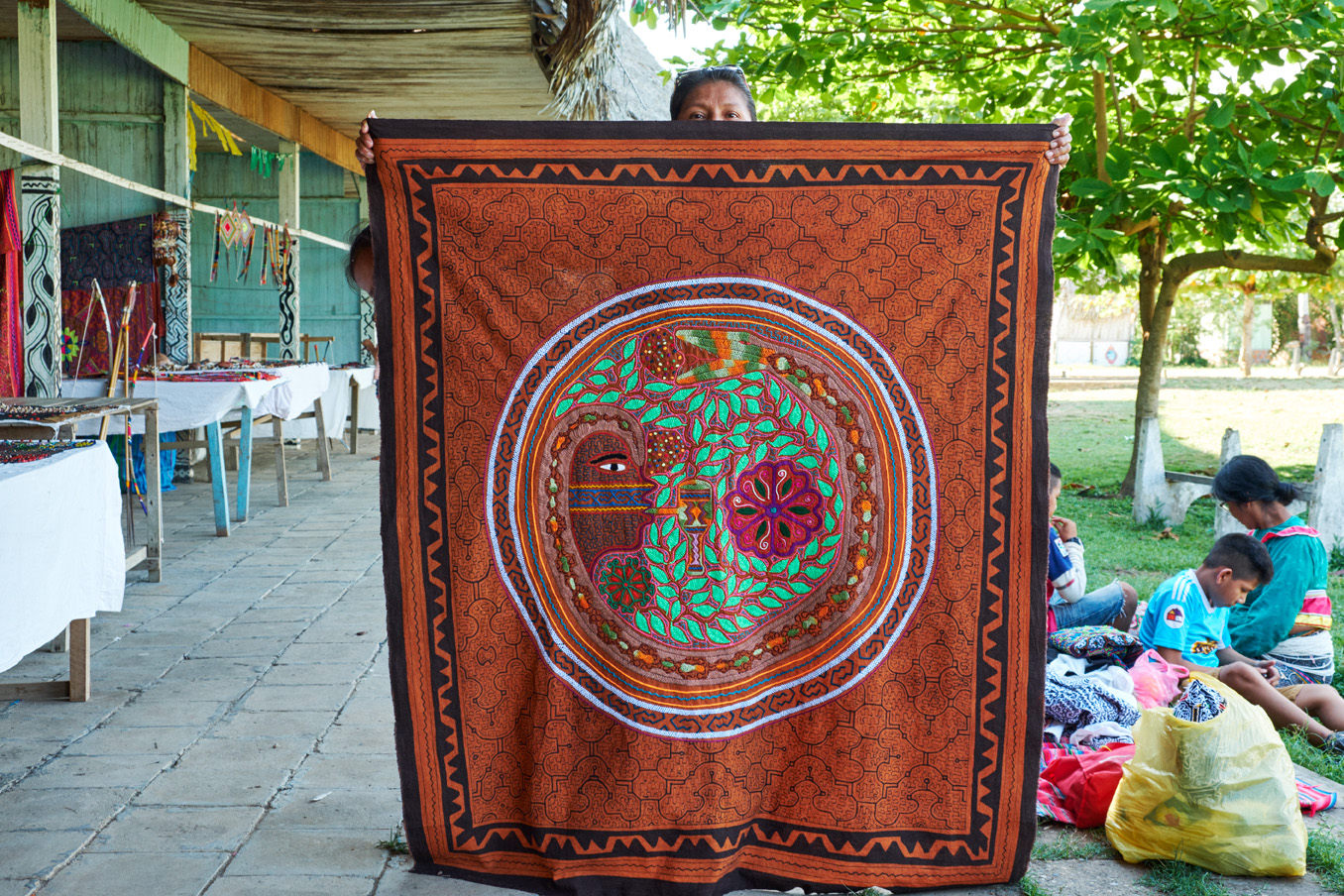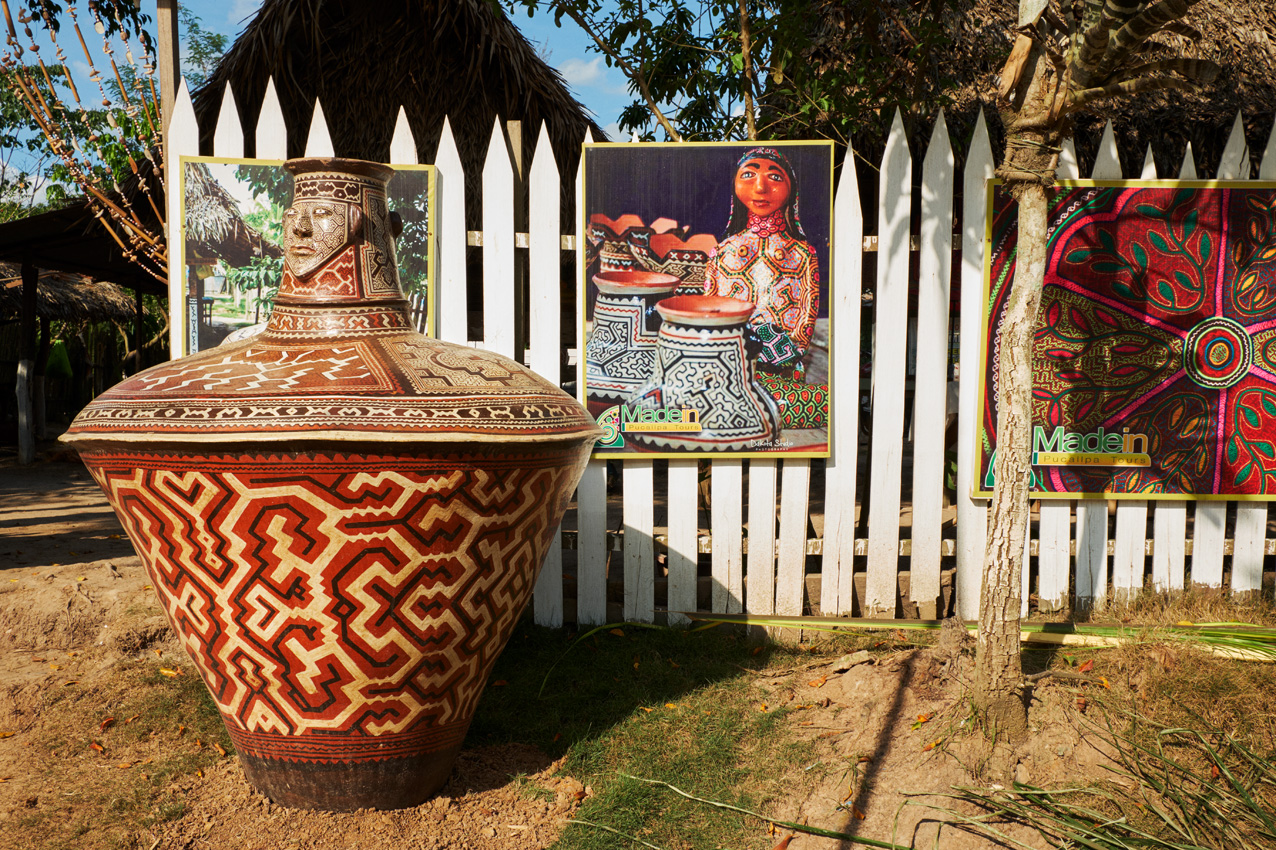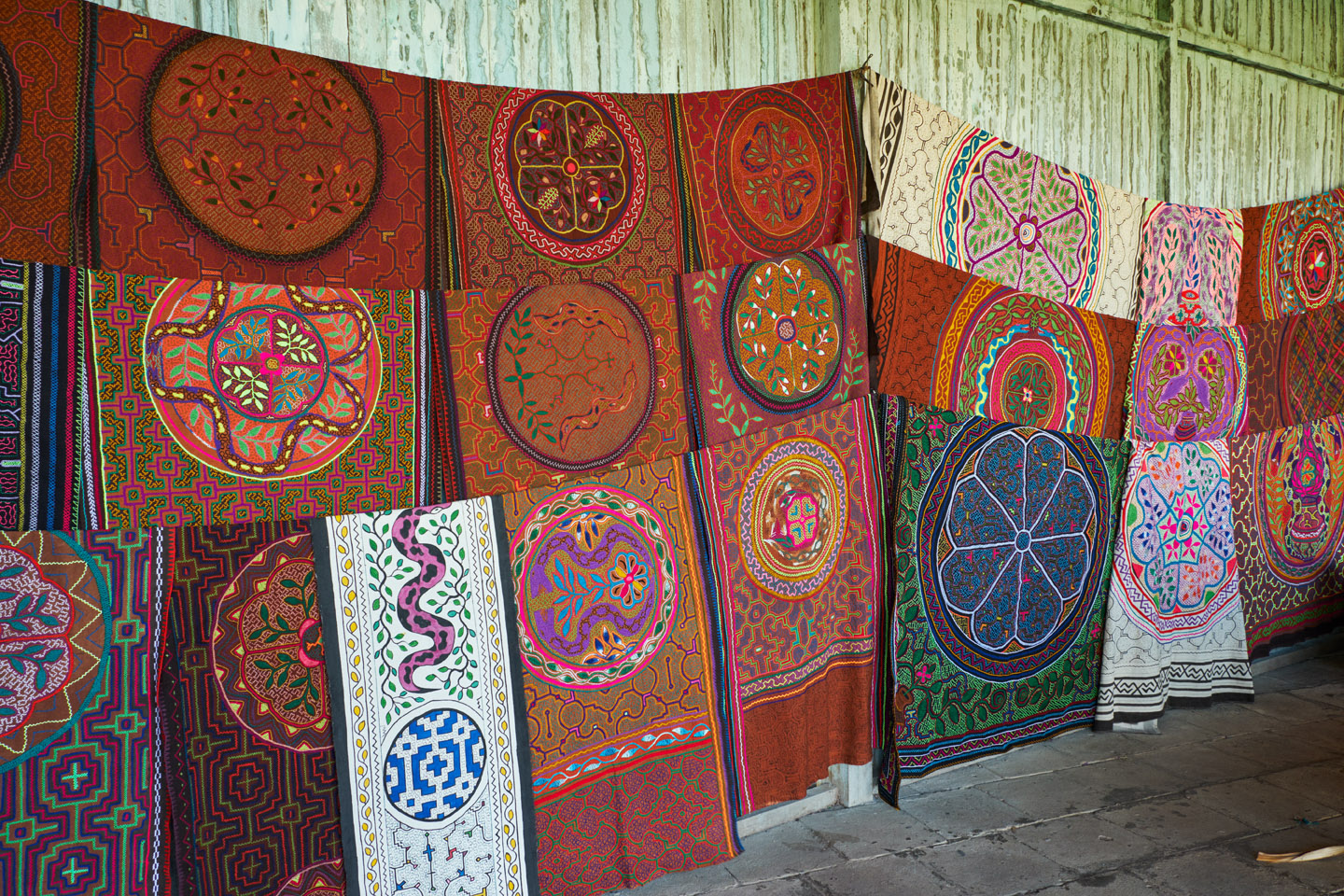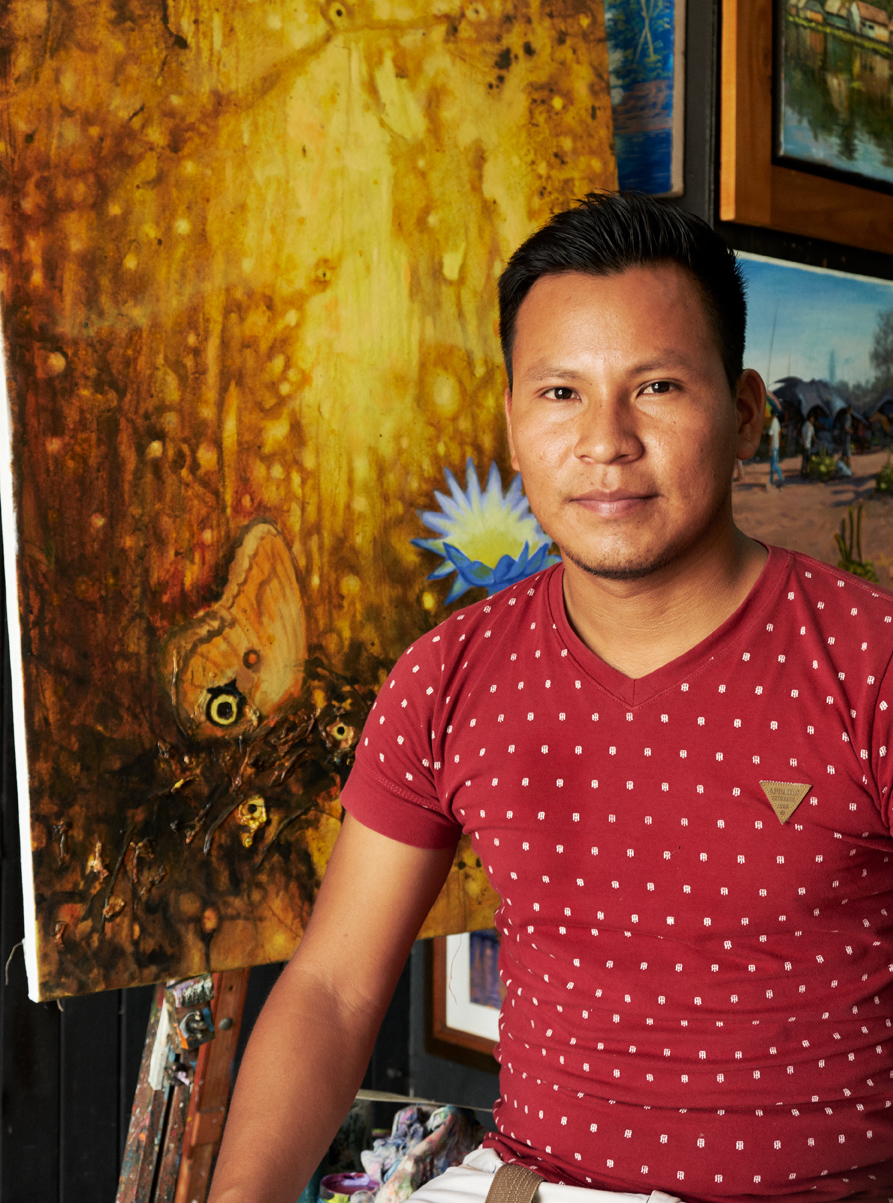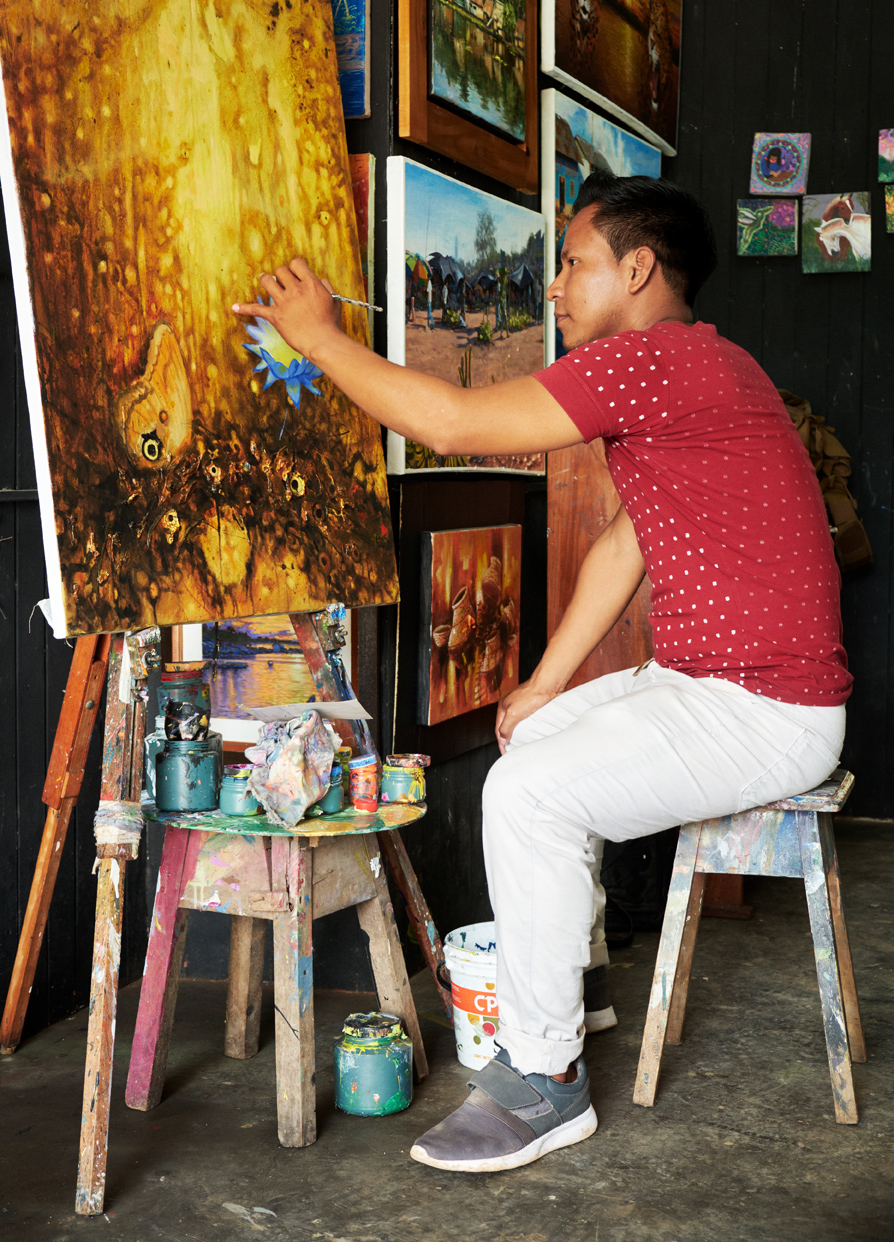Shipibos
The Shipibo-Conibo are an indigenous people along the Ucayali River in the Amazon rainforest in Perú. Formerly two groups, the Shipibo (apemen) and the Conibo (fishmen), they eventually became one distinct tribe through intermarriage and communal ritual and are currently known as the Shipibo-Conibo people. Some of the urbanized people live around Pucallpa in the Yarinacocha, an extensive indigenous zone. Most others live in scattered villages over a large area of jungle forest extending from Brazil to Ecuador.
Los Shipibo-Conibo son personas indigenas de a lo largo del Rio Ucayali en la Selva Amazónica del Peru. Actualmente hay dos grupos, Los Shipibo (apemen) y los Conibo (pescadores), eventualmente se fueron convirtiendo en una sola tribu por matrimonios y rituales comunales y son actualmente conocidos como la gente Shipibo-Conibo. Algunos estas urbanizados y viven alrededor de Pucallpa en la zona de Yarinacocha, una zona muy extensa. Muchos otros viven dispersos en pequeñas comunidades en las areas de selva forestal desde Brasil al Ecuador.
The Shipibo-Conibo live in the 21st century while keeping one foot in the past, spanning millennia in the Amazonian rainforest. The Shipibo are one of 14 indigenous tribes living in the Amazon Basin in Peru. They are a shamanically based people, deeply influenced by the power of the plants, animals and natural elements. A unique aspect of the Shipibo culture is their woven song tradition. The Shipibo record their icaros or healing songs in elaborate geometrical designs that function like a musical score and correlate and interact with the natural world. They see the patterns in the natural world and are able to reproduce them for protection, healing, abundance, harmony and a variety of other purposes.
Los Shipibo-Conibo viven en el siglo 21 con un pie en el pasado, habiendo abarcado milenios en la Selva forestal Amazónica. Los Shipibo son una de las 14 tribus indigenas que viven el Amazonas Basin del Peru. Son una populación fundamentada en el shamanismo, profundamente influenciados por el poder de las plantas, los animales y elementos naturales. Un aspecto que hace única la cultura Shipibo es su tejer de cantos tradicionales. Los Shipibo graban sus ícaros o canciones de sanacion en elaboradas geométricas que están diseñadas y que funcionan como un puntaje musical y se correlacionan e interactúan con el mundo natural. Ellos ven esos patrones en el mundo natural y son capaces de reproducirlos para protección, sanación, abundancia, armonía y una variedad de otros propósitos.
The Shipibo were never conquered by the Inca Empire and they resisted colonization by Spanish priests who began appearing in the rainforest around 1600. The Franciscan priests eventually established a settlement in Shipibo territory by the present port city of Pucallpa. Pucallpa is in the central area of the Shipibo territory and grew rapidly in the early 1900’s during the time of the rubber boom. Then in the 1950’s missionaries descended upon the Shipibo with intense efforts to convert them to Christianity. There is still a strong missionary presence around Pucallpa.
Los Shipibo nunca fueron derrotados por el Imperio Inca y resistieron la colonizacion Española de Curas que empezaron a aparecer en el bosque alrededor del 1600. Los Curas Frasnciscanos eventualmente establecieron una base en territorio Shipibo por el actual puerto de la ciudad de Pucallpa. Pucallpa es la are central del territorio Shipibo y creció rapidamente a comienzos del 1900's durante el periodo del boom de moda del caucho. Entonces en 1950 los misioneros descendieron sobre los Shipibo con esfuerzos muy intensos de convertirlos al cristianismo. Todavía hay una fuerte presencia misionera a los alrededores de Pucallpa.
Despite years of invasion and colonization, the Shipibo have maintained their rich culture and traditional knowledge. The majority live in communities that are only accessible by boat and the Shipibo that live around Pucallpa are marginally acculturated with the dominate culture of Peru. For most Shipibo, Shipibo is their first language and Spanish their second. They are highly respected for their knowledge of the rainforest plant medicines and their ceremonies. The heart of the Shipibo culture is rooted in their spiritual, physical, and cultural relationship to the rainforest.
A pesar de los años de invasión y colonizaron, los Shipibo han mantenido la riqueza de su cultura y el conocimiento tradicional. La mayoría vive en comunidades que solo son accesibles por barco y los Shipibo que viven a los alrededores de Pucallpa son marginalmente aculturados de la cultura dominante de Peru. Mayormente Shipibo, Shibido siendo su primer idioma y español su segundo idioma. Son altamente respetados por su conocimiento de las plantas medicinales de la selva forestal y por sus ceremonias. El corazón de la cultura Shipibo esta enraizada en sus relaciones espirituales, físicas y culturales con la salva.
The women or Shipibas, produce most of the artesania. They create beautiful pottery, textiles, and jewelry with designs that are unique to the Shipibo. The designs that they stitch and paint are visual songs representing the cosmovision of the Shipibo world, an exquisite interchange between the visual representation of energy and form and the ceremonial songs called Icaros. The women are strong, beautiful, loving mothers who work hard to provide for their children.
Las mujeres, o Shipibas, producen la mayoría de las artesanías. Crean hermosa poetría, textiles y joyería con diseños muy únicos Shipibo. Los diseños a punto de sutura o cocidos y sus pinturas son canciones visuales que representan la cosmovisión del mundo Shipibo, un intercambio exquisito entre la expresión visual de energía y forma y las canciones ceremoniales llamadas ícaros. Las mujeres son fuertes, hermosas, madres llenas de amor y que trabajan muy duro para proveerles a sus niños.
The women in Maestro Sinas and Emilios families also make wonderful artesana which is possible for the guests to purchase. Roonie is a young artist in Maestro Sinas and Emilios family. He studied visionary painting in the famous Ayahuasca artist Pablo Amaringos art school. Roonie has a small gallery space by the plaza in Yarinacocha where people can see and purchase his works.
Las mujeres en las familias de los Maestros Sina y Emilio también hacen hermosa artesanía que es posible comprar. Roonie es una joven artista en la familia de los Maestros Sina y Emilio. El estudió pintura visionaria con el famoso artista ayahuasquero Pablo Amaringo en su escuela de arte. Roonie tiene un pequeño espacio galería en la plaza de Yarinacocha donde la gente puede ver y comprar sus obras.
